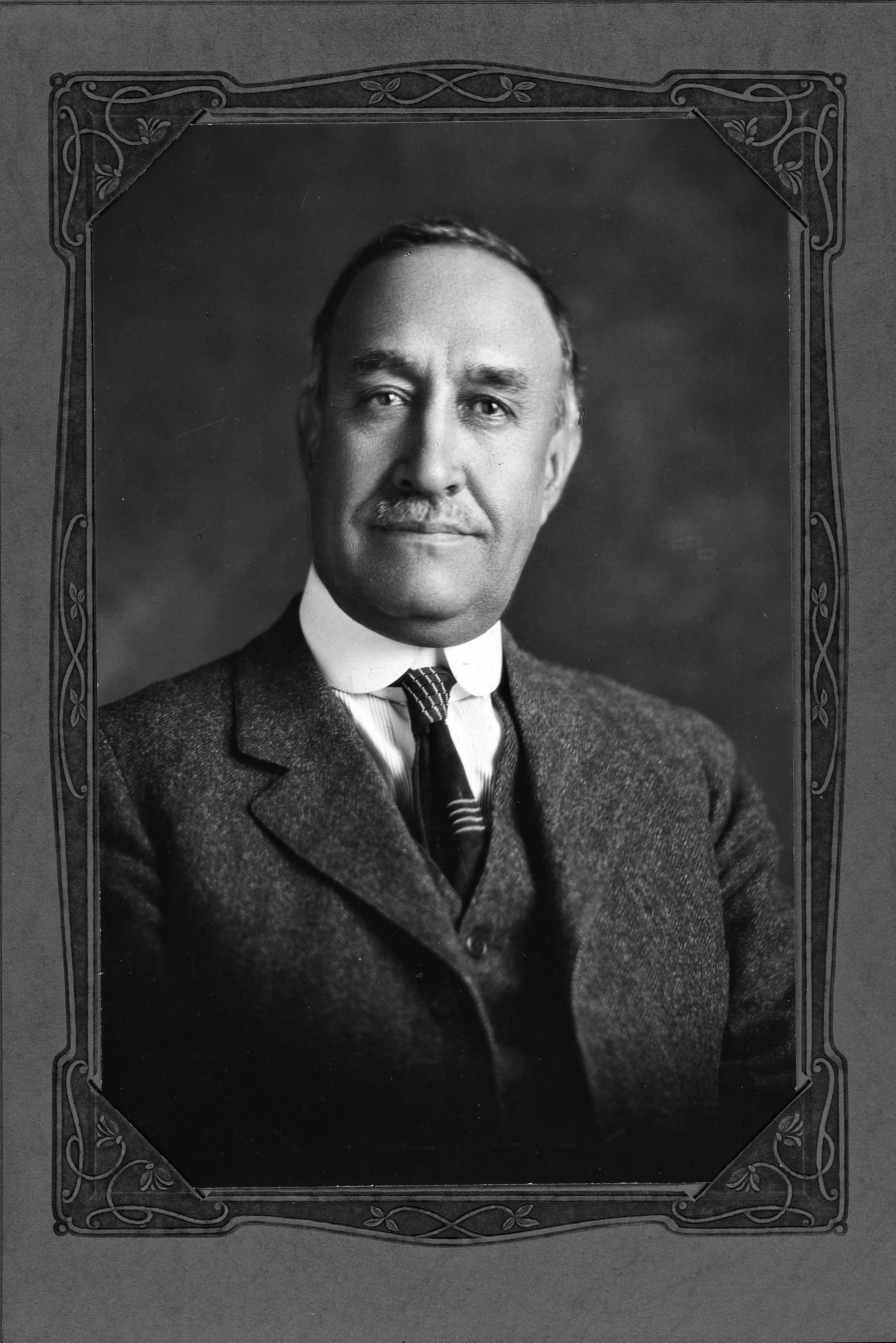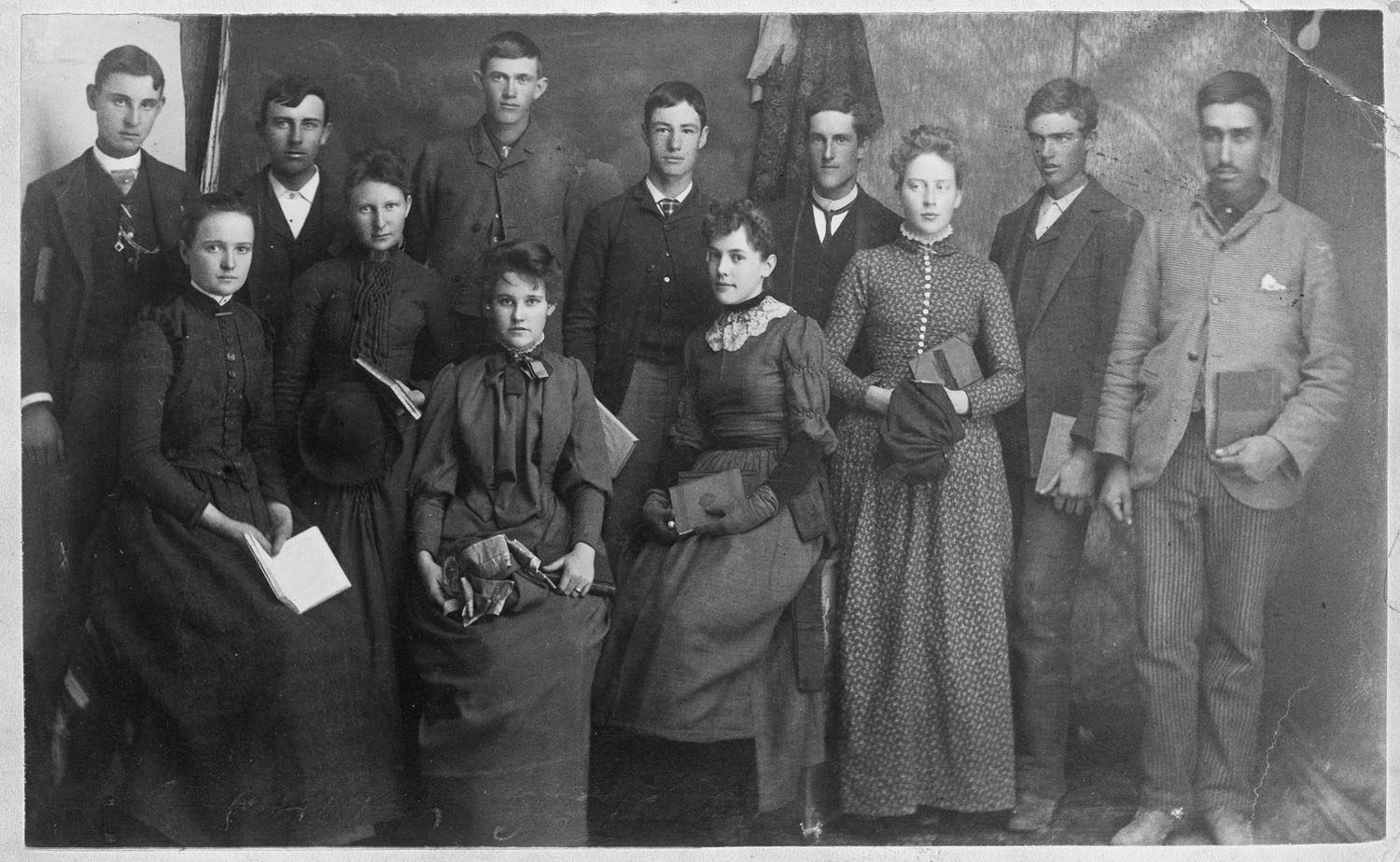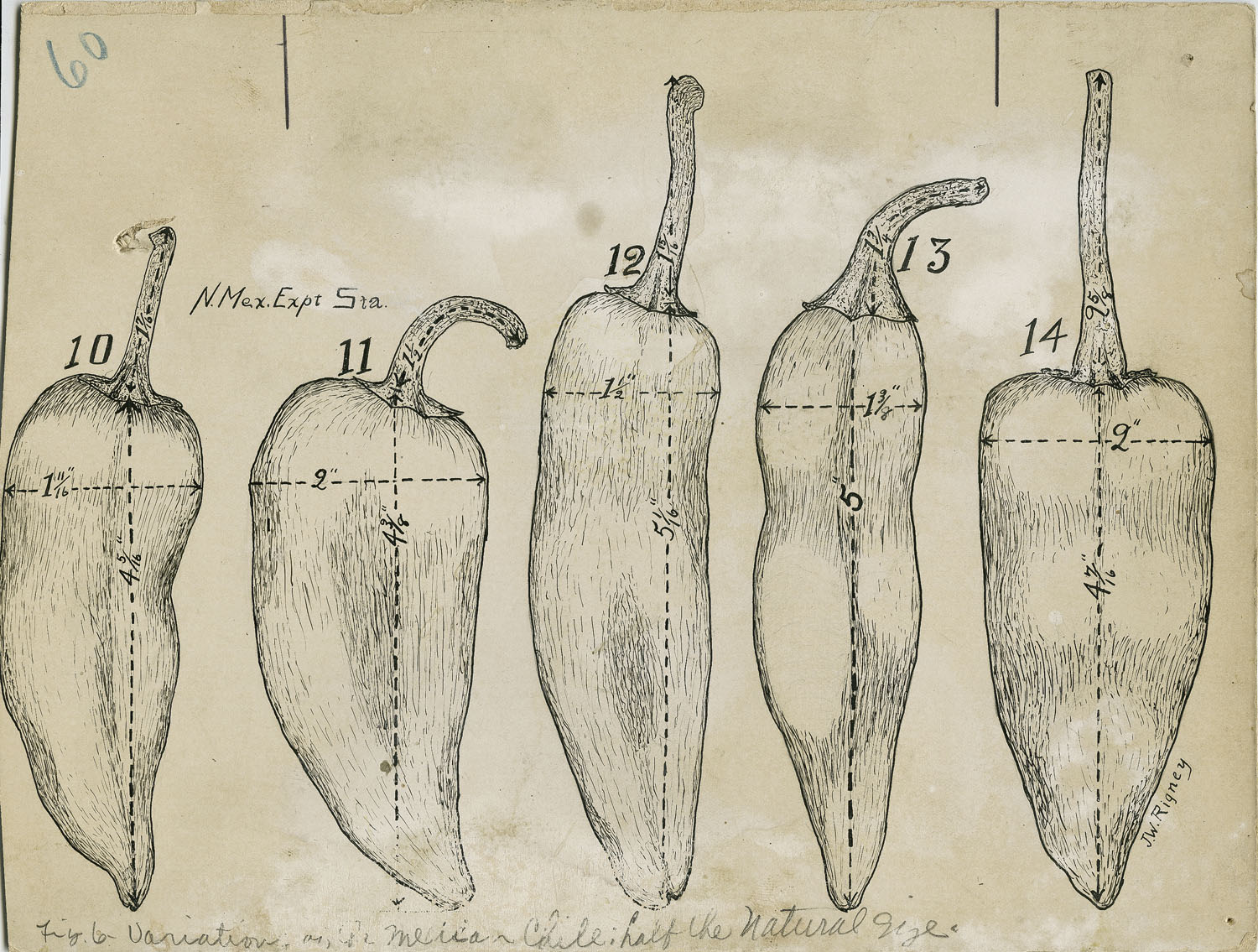Fabián García, Pioneer Horticulturalist
 "We are what we repeatedly do. Excellence then is not an act, but a habit." - Aristotle
"We are what we repeatedly do. Excellence then is not an act, but a habit." - Aristotle
This sentiment seems to fit no one better than Fabián García, New Mexico College of Agriculture and Mechanical Arts eminent researcher and academic leader. His legacy of excellence in both his professional and personal life inspired many in his time and continues to serve as an example at NMSU. García's achievement is all the more inspiring in view of his humble origins.
As a horticulturalist and director of NMSU's Agricultural Experiment Station García's work changed the face of New Mexico agriculture. He was one of only two people in the world experimenting with chile peppers during the early 20th century, he developed the first modern chile variety. His work in chile cultivation continues to be consulted today.
In this exhibit, we invite you to discover his seemingly transparent celebrity and exceptional example.
About the Collection
Fabián García was a Horticulturalist, Professor of Horticulture, and Director of the Agricultural Experiment Station at New Mexico College of Agriculture and Mechanic Arts (now New Mexico State University) in Las Cruces, New Mexico. The Fabián García collection consists of correspondence, notebooks, speeches, manuscripts for publications, and other materials related to his career, civic service, and personal life. It also includes the extant papers of Alfredo M. Sanchez, an Assistant Superintendent of Public Instruction for the Territory of New Mexico.
Finding Aid for the Fabián García Collection
Biography
Fabián García, according to his own account, was nine years old when he narrowly escaped a massacre by hostile Apaches who suddenly appeared before him and a friend while quail hunting in the Mimbres Valley.
Had the fierce warriors attacked the settlers near San Lorenzo, instead of a nearby ranch, Fabián García might have been among the casualties -- and the history of the Mesilla Valley and New Mexico State University would be entirely different. It turned out, however, that he lived longer and more notably than most.
Years after the event he wrote, "In those days people lived in terror of the Indian raids." After he and his friend, Juan, spotted the band of Apaches, "I being worse scared and not having the gun to carry, outran Juan by quite a distance. After a two-mile run and without ever turning back to see if the Apaches were pursuing us, we reached the town and gave the alarm. Immediately the men in the neighborhood got together and prepared ... for an attack by the Apaches, a thing they were used to ... Fortunately for the community, the Old Chief changed his mind and divided his (illegible word) towards a nearby ranch. But unfortunately for the occupants of the ranch at sunrise ... a favorite time of the attack ... the Apaches annihilated every human being at the place. Such experiences were common in this part of the country 30 years ago."

García's work as a horticulturalist and director of NMSU's Agricultural Experiment Station changed the face of New Mexico agriculture. As one of only two people in the world experimenting with chile peppers during the early 20th century, he developed the first modern chile variety. His work in chile cultivation continues to be consulted today. Born in 1871 in Chihuahua, Mexico, of what he later described as "humble parents", he became an orphan early. His grandmother, Doña Jacoba, brought him to the Mimbres Valley when he was only two years old. There she found domestic work in the home of Mr. and Mrs. Thompson of San Lorenzo. They later moved to the home of Mr. and Mrs. R. J. White of Georgetown, a nearby mining community. It was there that Fabián distinguished himself as the "champion marble player of the vicinity."
García felt lucky and that luck held when his grandmother took a new position, this time in the home of the prominent pioneer family of Thomas Casad. The Casads, owners of the 5,000-acre Santo Thomas Spanish Land Grant south of Old Mesilla, treated Fabián as their own. They provided a private tutor in his early years and later sent him to then - Las Cruces College.

"He was not a talented student," penned some undergraduate editor of the 1908 Swastika yearbook. Perhaps not. But as a member of the first graduating class from New Mexico College of Agriculture and Mechanical Arts in 1894, president of the Columbian Literary Society, and part of the first football team, Fabián could well be considered versatile. After graduation, he studied for another year at Cornell University before returning to the Las Cruces campus. Later, he received his higher degrees.
Throughout his years, García's Mexican ancestry would bring both rewards and anguish. As the college's only faculty member of Mexican heritage for many years, he worked particularly well with New Mexican farmers. However, he sometimes faced prejudice during his constant travels throughout the state. One innkeeper is said to have not admitted García for having a Spanish name.

Even so, Fabián García's name was honored in the Mesilla Valley. In 1907, this son of humble origins married Julieta Amador, daughter of one of the valley's oldest and most prominent families. Their courtship, as suggested by their correspondence in Spanish, followed tradition, but was also romantic. Julieta Amador's letters to García, preserved in the Rio Grande Historical Collections, were written frequently, at times daily, during their engagement.
García's long life, however, was not to be shared by Julieta. She died in 1920 and García never remarried, preferring the close company of family and friends and the environment of his beloved university.
In a biographical form filled out by García in 1942 for "Who's Who in America", appeared a poignant and telling statement of his character. On the line for listing children, he wrote simply, "A boy but he died." There are no other details regarding the matter.
In 1914, he was named the first director of the state Agricultural Experiment Station as well as a horticulturalists. A somewhat rudimentary science by today's standards, horticulture nonetheless was significantly improved under García.

His accomplishments in the field include his chile work, producing the first reliable chile pod, the beginnings of the hot "Sandia" pepper, and the introduction of the Grano onion. He was instrumental in planting some of the first pecan trees in the Mesilla Valley around 1913. Some of the 35 varieties planted still stand today.
García's commitment to the young college was apparent early. In 1903 when the land for the present horticulture farm was purchased, García personally signed the note for the loan. "Then to pay it off, he planted watermelons without irrigation. For water he added hand-operated 'pitcher' pumps to bring in the harvest." recalls Dr. Joseph V. Enzie.
Those who worked with García said he was an administrator with a sentimental feeling for tradition, although he did not resist change. His personal style was a blend of gentle humor and a firm hand.
García's success was often in his method of persuasion, associates said. He would joke frequently to make a point, cajoling his researchers and others into agreement or compromise. Besides his talent with people, García also astute with finances and his administrative reputation was impressive. His peers marveled at his prominence throughout the state, seemingly as well known in Albuquerque as in Bluewater or Las Vegas.
Jenny Curry, the wife of the late Albert Curry who succeeded García at the experiment station, remembers Fabián as "an elegant man, a born gentleman."
Because of his own background, García tried to help poor Mexican-American students, providing them with rooms at the farm while they attended school. In his later years, "Old Director, " as he came to be called, would say: "Don't be ashamed to say you're Mexican. I came from Mexico and I'm proud of it."
García became ill, suffering from Parkinson's disease, and was finally bedridden in McBride's Hospital in 1945. He clung to his directorship desperately, trying to work with acting director Curry from his hospital bed. But in that same year, the university regents "offered García the privilege of retirement, greatly (regretting) the condition which makes this action necessary."
Fabián García, who had distinguished himself internationally for his pioneering work in horticulture, died on August 6, 1948. His will directed that his estate, more than $85,000, be left to NMSU with the proviso that it be used to build a dormitory on campus for poor youths with Spanish names, because, " I want to help poor boys, for I know their hardships."
Written by Nena Singleton, Edited by Juan Carlos Lujan
Biographical Outline
| Date | Event |
|---|---|
| 1872, Jan 20 | Born in Chihuahua, Mexico |
| 1873 | Brought to the U.S. by his Grandmother, Doña Jacoba |
| ca. 1885 | Moved to the Mesilla Valley |
| 1889 | Became a U.S. citizen |
| 1890 | Entered the new agriculture college in Mesilla Park |
| 1894 | Graduated in the first class of the New Mexico College of Agriculture |
| 1894-1906 | Assistant in Agriculture, N.M.C.A & M.A. |
| 1899-1900 | Special graduate work, Cornell University |
| 1906 | M.S.A. from the New Mexico College of Agriculture and Mechanical Arts |
| 1906-1945 | Professor of Horticulture |
| 1906-1913 | Horticulturalist at the Agricultural Experiment Station |
| 1913-1945 | Director of the Agricultural Experiment Station |
| 1927, June | Honorary Doctor in Agriculture, NMSU |
| 1943, May 3 | Honorary Doctor of Science, University of New Mexico, Albuquerque |
| 1941-1947 | Member of Selective Service State Board of Appeals |
| 1945, Feb. | Hospitalized with Parkinson's Disease |
| 1948, Aug. 6 | Died at McBride's Hospital, Las Cruces, NM |

